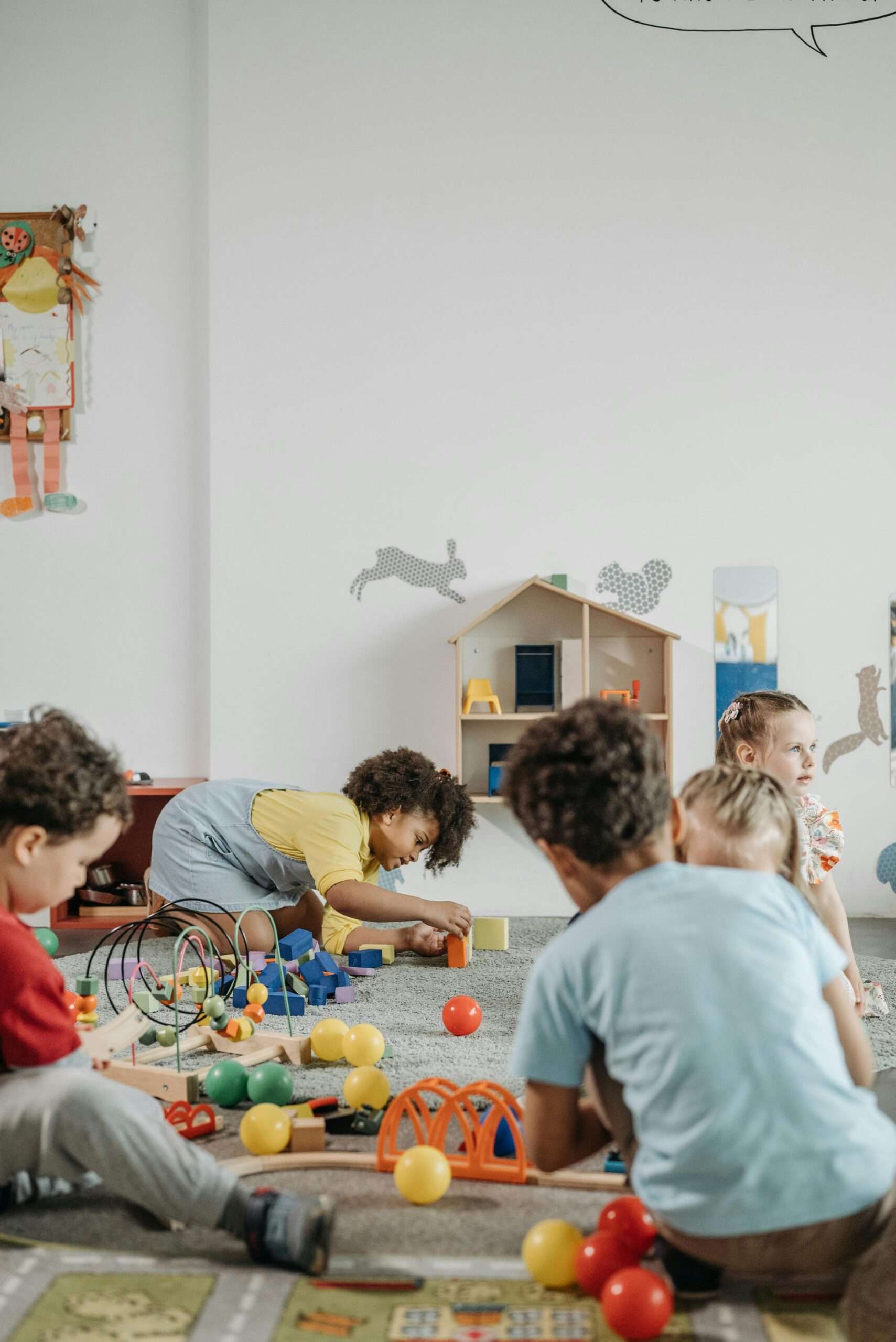-
Table of Contents
- Introduction
- The Importance of a Growth Mindset in Elementary School Students
- Teaching Strategies to Foster a Growth Mindset in Young Learners
- Encouraging Perseverance and Resilience in Elementary School Students
- Developing a Positive Attitude towards Challenges and Mistakes in the Classroom
- Nurturing a Love for Learning and Continuous Improvement in Elementary School Students
- Empowering Elementary School Students to Set and Achieve Goals with a Growth Mindset
- Conclusion
Introduction: Growth Mindset Lessons for Elementary School
Teaching children about growth mindset is crucial in fostering their personal and academic development. A growth mindset is the belief that abilities and intelligence can be developed through effort, perseverance, and learning from mistakes. By instilling this mindset in elementary school students, we empower them to embrace challenges, persist in the face of setbacks, and ultimately reach their full potential.
In this article, we will explore the importance of growth mindset lessons for elementary school students and discuss effective strategies for incorporating these lessons into their education.
The Importance of a Growth Mindset in Elementary School Students
The Importance of a Growth Mindset in Elementary School Students
In today’s rapidly changing world, it is more important than ever to instill a growth mindset in elementary school students. A growth mindset is the belief that abilities and intelligence can be developed through hard work, dedication, and perseverance. This mindset is in stark contrast to a fixed mindset, which believes that abilities and intelligence are fixed traits that cannot be changed.
Why is a growth mindset so crucial for elementary school students? Well, research has shown that students with a growth mindset are more likely to embrace challenges, persist in the face of setbacks, and ultimately achieve higher levels of success. By teaching children to believe in their ability to grow and improve, we are setting them up for a lifetime of learning and personal development.
One of the key benefits of a growth mindset is that it encourages students to view failure as an opportunity for growth rather than a reflection of their abilities. When students believe that their intelligence and abilities can be developed, they are more likely to take risks and try new things. They understand that failure is not a permanent state but rather a stepping stone on the path to success. This mindset shift can have a profound impact on a child’s self-esteem and motivation to learn.
Another important aspect of a growth mindset is the belief in the power of effort. Students with a growth mindset understand that hard work and effort are essential for achieving their goals. They are willing to put in the time and effort required to master new skills and overcome challenges. This belief in the power of effort can lead to increased resilience and perseverance in the face of obstacles.
Teaching a growth mindset to elementary school students can be done through various strategies and activities. One effective approach is to praise students for their effort and strategies rather than their intelligence or talent. By focusing on the process rather than the outcome, we are reinforcing the idea that hard work and effort are what lead to success.
Additionally, it is important to provide students with opportunities to reflect on their learning and set goals for improvement. By encouraging students to set realistic and achievable goals, we are teaching them the value of self-reflection and self-improvement. This practice helps students develop a sense of agency and ownership over their learning, which can have a profound impact on their motivation and engagement in the classroom.
Furthermore, it is crucial to create a safe and supportive learning environment where mistakes are seen as opportunities for growth. By fostering a classroom culture that embraces risk-taking and learning from failure, we are encouraging students to step outside of their comfort zones and push themselves to new heights.
In conclusion, a growth mindset is of utmost importance for elementary school students. By teaching children to believe in their ability to grow and improve, we are setting them up for a lifetime of learning and personal development. A growth mindset encourages students to embrace challenges, persist in the face of setbacks, and ultimately achieve higher levels of success. By praising effort and strategies, providing opportunities for reflection and goal-setting, and fostering a safe and supportive learning environment, we can help instill a growth mindset in our elementary school students and empower them to reach their full potential.
Teaching Strategies to Foster a Growth Mindset in Young Learners
Teaching Strategies to Foster a Growth Mindset in Young Learners
In today’s rapidly changing world, it is essential to equip young learners with the skills and mindset necessary to navigate the challenges they will face in the future. One such mindset that has gained significant attention in recent years is the growth mindset. Coined by psychologist Carol Dweck, the growth mindset is the belief that abilities and intelligence can be developed through dedication and hard work. This article will explore some effective teaching strategies to foster a growth mindset in elementary school students.
First and foremost, it is crucial to create a safe and supportive classroom environment. Students need to feel comfortable taking risks and making mistakes without fear of judgment or failure. Teachers can achieve this by emphasizing the importance of effort and progress over grades and outcomes. By praising students for their hard work and perseverance, rather than solely focusing on their achievements, teachers can instill a growth mindset in their young learners.
Another effective strategy is to teach students about the brain and how it can grow and change. Explaining the concept of neuroplasticity, the brain’s ability to reorganize and form new connections, can help students understand that their abilities are not fixed but can be developed over time. By teaching them about the power of their brains, teachers can inspire students to embrace challenges and view setbacks as opportunities for growth.
Furthermore, it is essential to provide students with specific feedback that focuses on effort and improvement. Instead of simply praising or criticizing their work, teachers should provide constructive feedback that highlights areas for growth. By encouraging students to reflect on their mistakes and learn from them, teachers can foster a growth mindset and promote a culture of continuous improvement in the classroom.
In addition to feedback, goal-setting plays a crucial role in developing a growth mindset. By setting realistic and attainable goals, students can experience the satisfaction of achieving them through hard work and perseverance. Teachers can guide students in setting both short-term and long-term goals, encouraging them to break down larger tasks into smaller, manageable steps. This approach not only helps students develop a growth mindset but also enhances their organizational and planning skills.
Collaborative learning activities also provide an excellent opportunity to foster a growth mindset. By working in groups, students can learn from one another, share their perspectives, and develop problem-solving skills. Teachers can assign tasks that require teamwork and encourage students to support and challenge one another in a respectful manner. This collaborative approach not only promotes a growth mindset but also enhances social and communication skills.
Lastly, it is crucial to celebrate and showcase students’ growth and progress. By highlighting their achievements, both big and small, teachers can reinforce the idea that effort and hard work lead to success. This recognition not only boosts students’ self-esteem but also motivates them to continue striving for improvement.
In conclusion, fostering a growth mindset in elementary school students is essential for their long-term success and well-being. By creating a safe and supportive classroom environment, teaching students about the brain’s ability to grow and change, providing specific feedback, setting goals, promoting collaborative learning, and celebrating growth, teachers can instill a growth mindset in their young learners. By adopting these strategies, educators can empower students to embrace challenges, persevere through setbacks, and develop a lifelong love for learning.
Encouraging Perseverance and Resilience in Elementary School Students
Encouraging Perseverance and Resilience in Elementary School Students
In today’s fast-paced and ever-changing world, it is crucial to equip our children with the necessary skills to navigate through challenges and setbacks. One of the most valuable lessons we can teach them is the importance of having a growth mindset. A growth mindset is the belief that abilities and intelligence can be developed through dedication and hard work. By instilling this mindset in elementary school students, we can help them develop perseverance and resilience, which are essential qualities for success in both academics and life.
One effective way to encourage perseverance and resilience in elementary school students is by teaching them about the power of yet. When faced with a difficult task or a setback, many students may feel discouraged and believe that they are simply not capable of achieving success. By introducing the concept of yet, we can shift their perspective and help them understand that they may not have mastered a skill or concept yet, but with effort and practice, they can improve and eventually succeed. This simple word can make a world of difference in a student’s mindset and motivate them to keep trying, even when faced with challenges.
Another important lesson for elementary school students is the idea that mistakes are opportunities for growth. Many students are afraid of making mistakes because they fear judgment or failure. However, by teaching them that mistakes are a natural part of the learning process, we can help them develop resilience and the ability to bounce back from setbacks. When students understand that mistakes are not a reflection of their abilities, but rather stepping stones towards improvement, they become more willing to take risks and embrace challenges.
Furthermore, it is crucial to provide students with specific strategies and tools to help them overcome obstacles and persevere through difficult tasks. One effective strategy is the use of positive self-talk. By teaching students to replace negative thoughts with positive and encouraging statements, we can help them build resilience and develop a more optimistic outlook. For example, instead of saying, “I can’t do this,” students can learn to say, “I can’t do this yet, but I will keep trying.” This shift in mindset can make a significant difference in their ability to persevere through challenges.
Additionally, it is important to celebrate effort and progress rather than solely focusing on the end result. When students are praised for their hard work and dedication, they are more likely to develop a growth mindset and continue to put in the effort required to succeed. By emphasizing the process rather than the outcome, we can help students understand that success is not solely determined by natural talent, but rather by their willingness to put in the necessary work.
In conclusion, encouraging perseverance and resilience in elementary school students is essential for their long-term success. By teaching them about the power of yet, the value of mistakes, and providing them with specific strategies to overcome obstacles, we can help them develop a growth mindset. This mindset will not only benefit them academically but also in all aspects of their lives. By instilling these lessons early on, we are equipping our children with the necessary tools to navigate through challenges and setbacks with confidence and resilience.
Developing a Positive Attitude towards Challenges and Mistakes in the Classroom
Developing a Positive Attitude towards Challenges and Mistakes in the Classroom
In today’s fast-paced and competitive world, it is essential for students to develop a growth mindset from an early age. A growth mindset is the belief that abilities and intelligence can be developed through dedication and hard work. By fostering a growth mindset in elementary school, educators can help students develop a positive attitude towards challenges and mistakes, setting them up for success in the future.
One of the key aspects of developing a growth mindset is teaching students to embrace challenges. Many students are afraid of failure and tend to avoid challenging tasks. However, by reframing challenges as opportunities for growth and learning, students can develop resilience and perseverance. Teachers can encourage this mindset by providing students with challenging tasks that are within their reach but require effort and dedication to complete. By celebrating the process and effort put into the task, rather than just the end result, students learn to value the journey and become more willing to take on challenges.
Another important aspect of developing a growth mindset is teaching students to view mistakes as learning opportunities. Many students are afraid of making mistakes and see them as a sign of failure. However, mistakes are an essential part of the learning process. By reframing mistakes as stepping stones towards improvement, students can develop a positive attitude towards them. Teachers can create a safe and supportive classroom environment where mistakes are seen as valuable learning experiences. Encouraging students to reflect on their mistakes, learn from them, and try again helps them develop resilience and a willingness to take risks.
To foster a growth mindset, it is crucial for teachers to provide constructive feedback that focuses on effort and improvement rather than just the final outcome. By praising students’ effort, strategies, and progress, teachers can reinforce the idea that hard work and dedication lead to growth and success. Additionally, teachers can model a growth mindset by sharing their own challenges and mistakes, demonstrating that learning is a lifelong process.
Incorporating growth mindset lessons into the curriculum can be done in various ways. Teachers can introduce growth mindset concepts through stories, videos, or discussions. They can also incorporate growth mindset language into their daily interactions with students, using phrases such as “I can’t do it yet” or “Mistakes help us learn.” By consistently reinforcing these messages, teachers can help students internalize the belief that their abilities can be developed through effort and practice.
Furthermore, it is important to involve parents in the process of developing a growth mindset. Educators can provide resources and strategies for parents to support their children’s growth mindset at home. By encouraging parents to praise their children’s effort and progress rather than just their achievements, educators can create a consistent message that promotes a growth mindset both in and out of the classroom.
In conclusion, developing a positive attitude towards challenges and mistakes is a crucial aspect of fostering a growth mindset in elementary school. By teaching students to embrace challenges, view mistakes as learning opportunities, and provide constructive feedback, educators can help students develop resilience, perseverance, and a willingness to take risks. By incorporating growth mindset lessons into the curriculum and involving parents in the process, educators can create a supportive and empowering learning environment that sets students up for success in the future.
Nurturing a Love for Learning and Continuous Improvement in Elementary School Students
Nurturing a Love for Learning and Continuous Improvement in Elementary School Students
In today’s rapidly changing world, it is crucial to equip our children with the skills and mindset necessary to thrive in any situation. One of the most effective ways to do this is by instilling a growth mindset in elementary school students. A growth mindset is the belief that abilities and intelligence can be developed through dedication and hard work. By teaching children to embrace challenges, persist in the face of setbacks, and see effort as a path to mastery, we can empower them to become lifelong learners and achieve their full potential.
One of the first steps in nurturing a growth mindset in elementary school students is to help them understand that their abilities are not fixed. Many children believe that their intelligence and talents are predetermined, leading them to shy away from challenges for fear of failure. By teaching them that their brains are like muscles that can grow stronger with practice, we can encourage them to embrace challenges as opportunities for growth.
It is also important to teach children that setbacks and failures are not indicators of their worth or potential. In a fixed mindset, failure is seen as a reflection of one’s abilities, leading to feelings of inadequacy and a fear of trying again. However, in a growth mindset, failure is viewed as a stepping stone to success. By reframing failure as a natural part of the learning process and emphasizing the importance of perseverance, we can help children develop resilience and bounce back from setbacks.
Another key aspect of nurturing a growth mindset in elementary school students is teaching them to value effort and hard work. In a fixed mindset, children may believe that success comes easily to those who are naturally talented, leading them to give up when faced with challenges. By highlighting the importance of effort and showing them that even the most successful individuals have put in countless hours of practice, we can inspire children to develop a strong work ethic and a willingness to put in the necessary effort to achieve their goals.
Furthermore, it is essential to provide students with opportunities for reflection and self-assessment. By encouraging them to reflect on their progress and identify areas for improvement, we can help them develop a sense of ownership over their learning. This can be done through regular goal-setting exercises, where students set specific, achievable goals and track their progress over time. By celebrating their successes and providing constructive feedback, we can foster a sense of accomplishment and motivate them to continue striving for growth.
In addition to these strategies, it is important to create a supportive and inclusive learning environment. By fostering a sense of belonging and encouraging collaboration, we can help students feel safe to take risks and make mistakes. This can be achieved through activities that promote teamwork and cooperation, such as group projects and peer mentoring programs. By creating a culture that values effort, growth, and learning from one another, we can cultivate a love for learning in elementary school students that will carry them through their academic journey and beyond.
In conclusion, nurturing a growth mindset in elementary school students is crucial for their long-term success and happiness. By teaching them to embrace challenges, persist in the face of setbacks, and see effort as a path to mastery, we can empower them to become lifelong learners and achieve their full potential. By instilling a growth mindset in our children, we are equipping them with the skills and mindset necessary to thrive in an ever-changing world.
Empowering Elementary School Students to Set and Achieve Goals with a Growth Mindset
Empowering Elementary School Students to Set and Achieve Goals with a Growth Mindset
In today’s rapidly changing world, it is crucial to equip our children with the necessary skills and mindset to navigate the challenges they will face in the future. One such mindset that has gained significant attention in recent years is the growth mindset. This article aims to explore the importance of teaching growth mindset lessons to elementary school students and how it can empower them to set and achieve their goals.
A growth mindset is the belief that abilities and intelligence can be developed through dedication, hard work, and perseverance. It contrasts with a fixed mindset, which believes that intelligence and abilities are fixed traits that cannot be changed. By instilling a growth mindset in our young learners, we can help them develop resilience, a love for learning, and the ability to overcome obstacles.
One of the key lessons in teaching a growth mindset to elementary school students is the power of yet. When faced with a challenge or setback, students with a growth mindset understand that they may not have mastered a concept or skill yet, but with effort and practice, they can improve. This simple shift in perspective can have a profound impact on their motivation and willingness to take on new challenges.
Another important lesson is the concept of embracing mistakes as learning opportunities. In a fixed mindset, mistakes are seen as failures and evidence of incompetence. However, in a growth mindset, mistakes are viewed as stepping stones to success. By reframing mistakes as opportunities to learn and grow, students become more willing to take risks and push themselves outside of their comfort zones.
Teaching elementary school students about the brain and its ability to grow and change is also crucial in fostering a growth mindset. By explaining the concept of neuroplasticity, students understand that their brains are like muscles that can be strengthened through effort and practice. This knowledge empowers them to take ownership of their learning and believe in their ability to improve.
Furthermore, setting goals is an essential component of developing a growth mindset. By teaching students how to set realistic and achievable goals, they learn to break down larger tasks into smaller, manageable steps. This process not only helps them stay focused and motivated but also provides them with a sense of accomplishment as they make progress towards their goals.
To support the development of a growth mindset, it is important to provide students with specific feedback that focuses on effort, strategies, and improvement rather than solely on the end result. By praising their hard work, perseverance, and problem-solving skills, we reinforce the idea that success is not solely determined by innate abilities but by the effort put forth.
In conclusion, teaching growth mindset lessons to elementary school students is crucial in empowering them to set and achieve their goals. By instilling a growth mindset, students develop resilience, a love for learning, and the ability to overcome obstacles. Through lessons on the power of yet, embracing mistakes, understanding the brain’s ability to grow, setting goals, and providing specific feedback, we can equip our young learners with the mindset and skills necessary to thrive in an ever-changing world.
Conclusion
In conclusion, growth mindset lessons for elementary school are crucial in fostering a positive learning environment. These lessons help students develop resilience, perseverance, and a belief in their ability to improve. By teaching children that intelligence and abilities can be developed through effort and practice, they are more likely to embrace challenges, learn from mistakes, and ultimately achieve their full potential. Implementing growth mindset lessons in elementary schools can have a lasting impact on students’ academic and personal growth, setting them up for success in the future.
FAQ
1. How do you teach growth mindset in elementary school?
Growth mindset can be taught through role-modeling, encouraging positive self-talk, using classroom language that praises effort, and incorporating activities like goal setting, journaling, and open discussions about challenges.
2. What are the benefits of teaching a growth mindset at a young age?
Teaching growth mindset helps young students build perseverance, resilience, and a love for learning, ultimately leading to better academic performance and emotional well-being.
3. Can students develop a growth mindset later in life?
Yes, growth mindset can be developed at any age. However, teaching it early in life sets a strong foundation for lifelong learning.
4. How can parents support a growth mindset at home?
Parents can encourage a growth mindset by praising effort, discussing failures as learning opportunities, and supporting children in setting realistic, incremental goals.
5. What are some good books for teaching growth mindset to children?
Books like “The Most Magnificent Thing” by Ashley Spires, “Giraffes Can’t Dance” by Giles Andreae, and “Your Fantastic Elastic Brain” by JoAnn Deak are excellent for introducing growth mindset concepts.
Read more
7 Behaviors Kids Learn From Their Parents.
Hearing Loss in Children: Tips for Parents and Caregivers in Nurturing Children with Hearing Loss
Happy Daughters Day 2024 10+ Quotes, Wishes, Messages to Share with from Mother and Father
10 Rules from the book How to Win Friends and Influence People.
8 Qualities Every Child must Develop Before they Turn 12






